

Ficus Bonsai Plant
Ginseng is a Chinese word that means roots. So, the Ficus Bonsai Plant is named because of its unique roots and shape. Native to southeast Asia, the ginseng Ficus is also called banyan fig, Taiwan Ficus, and laurel fig. Ficus “Ginseng” varieties have fat trunks, with substantial exposed roots, giving the tree a very exotic and tropical feel. If you are looking for an entry into the ancient Japanese art of Bonsai, a great place to start is with a Ginseng Ficus.


Light & Temperature
Your Ficus Bonsai Plant will need a good amount of light. Indoors, placing it on a windowsill is a good idea. If this is not available, plant lights can aid in growing your Ginseng Ficus. If you take your tree outdoors during the summer, plan to place it in a spot that gets plenty of sun. The Bonsai will not tolerate shade at all.


Watering
Water your Ginseng Ficus Bonsai Plant thoroughly whenever the soil gets slightly dry. Misting the plant daily is a good idea, but do not water to the point where the Bonsai is dripping, or else fungal issues can occur. If your plant is in an especially warm environment more frequent watering will be needed.


Fertilization
Ginseng Ficus Bonsai Plant do well in a soil mix that is sixty percent aggregate and forty percent organic matter. Bonsai draw on very little soil, so it is necessary to replenish their nutrients occasionally. Any multi-purpose liquid fertilizer available at your friendly local nursery or garden centre should be adequate. For Bonsai, dilute the mixture by fifty percent with water before applying monthly.


Repotting Ginseng Ficus
Repotting a Ficus Bonsai Plant must happen when the root system has filled the pot. It needs to be done to give the tree new soil and to encourage a more compact root system. You will only need to repot your Ficus every other year during the summer. Do this by removing the tree and soil from its pot and trim the outer and lower quarter of the tree’s roots. Be careful not to over prune or remove too much root material. Place the bonsai into the original pot or a new container using the bonsai soil mix.
Pruning
Pruning is a necessity and part of what makes a Ficus Bonsai Plant and not just a plant. You can forego the pruning for a year or longer to achieve a thicker trunk. When ready to prune leaves, a good rule to follow is to prune back to two leaves after six to eight leaves have grown. If you have left the trunk to thicken, new shoots will grow from old wood. But be sure to tend to any substantial wounds with cut paste so disease does not occur. Always use sharp and clean tools when working with your plant.


Ancient Meaning & Symbolism
The art of bonsai dates back centuries. It’s a highly respected art form and a deeply symbolic, sacred practice with its integral elements of simplicity, harmony, and balance also reflected within many aspects of Japanese culture, and their way of life. Ficus Bonsai Plant is referred to as a “cheerful tree” because it is thought to enhance the moods of those who are nearby. This bonsai symbolizes unity, new beginnings, abundance, simplicity, and the harmony of nature. It is also believed that having a Ficus in the home will release positivity and understanding. Ficus Bonsai Plant is one of the most popular indoor bonsai because it is notoriously low maintenance. For this reason, it is popularly gifted and is considered one of the best beginner bonsai.
Plant Care Tips
- Dropping Leaves: It could be because they are being overwatered or there isn’t enough moisture in the air. They may not be getting enough light or they could be in a drafty spot. You really need to assess your personal situation because everyone’s homes are different. It may take some time but you’ll find the perfect place to keep your bonsai.
- Fungal Issues: If you overwater your Ficus ginseng, you may end up with fungus. Move your infected plant away from the rest of your collection. Remove the tree from its pot. Check to see if there is root rot that is causing the fungus. Repot your tree into a clean pot with new bonsai soil. You can spray your plant with fungicide to kill any fungus that is left over.
- Yellowed or wilting leaves: The most common cause is over-watering, but it can also come from some diseases, under-watering, or overexposure to sunlight.
- Visible spots on leaves: The appearance of spots – usually red, brown, or black – on your tree’s leaves almost always means a fungal infection. This should be treated ASAP! Any affected leaves must be pruned, and it’s a good idea to treat your tree with an anti-fungal medication from a gardening store.




Our Favourable Aspects
Potting Mixture: It’s a mixture of appropriate amounts of soil, cocopeat & organic vermicompost. Provides best environment to the plant’s roots. It also contains slow-release Fertilizer which gives nutrients to the plants every time it is watered for 6 months.
· Packaging: Plant is secured in a good quality cardboard packaging. Inner Box holds the potted plant in place so that any movement during transit does not affect the plant. Outer box has slits which allow the plant to breathe freely during transit.


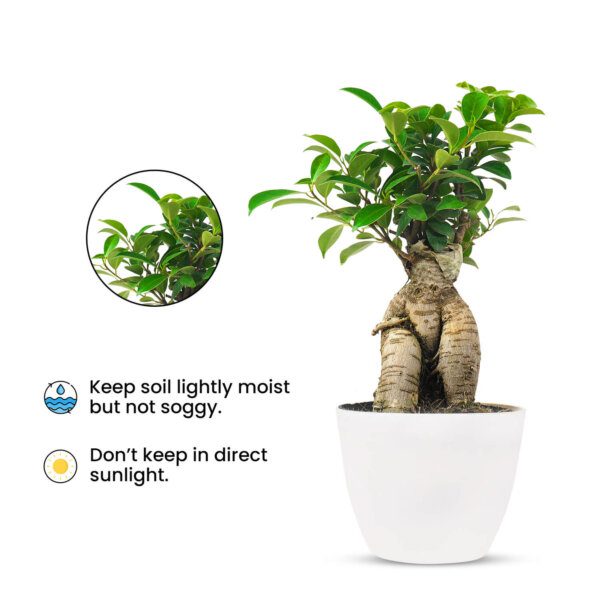

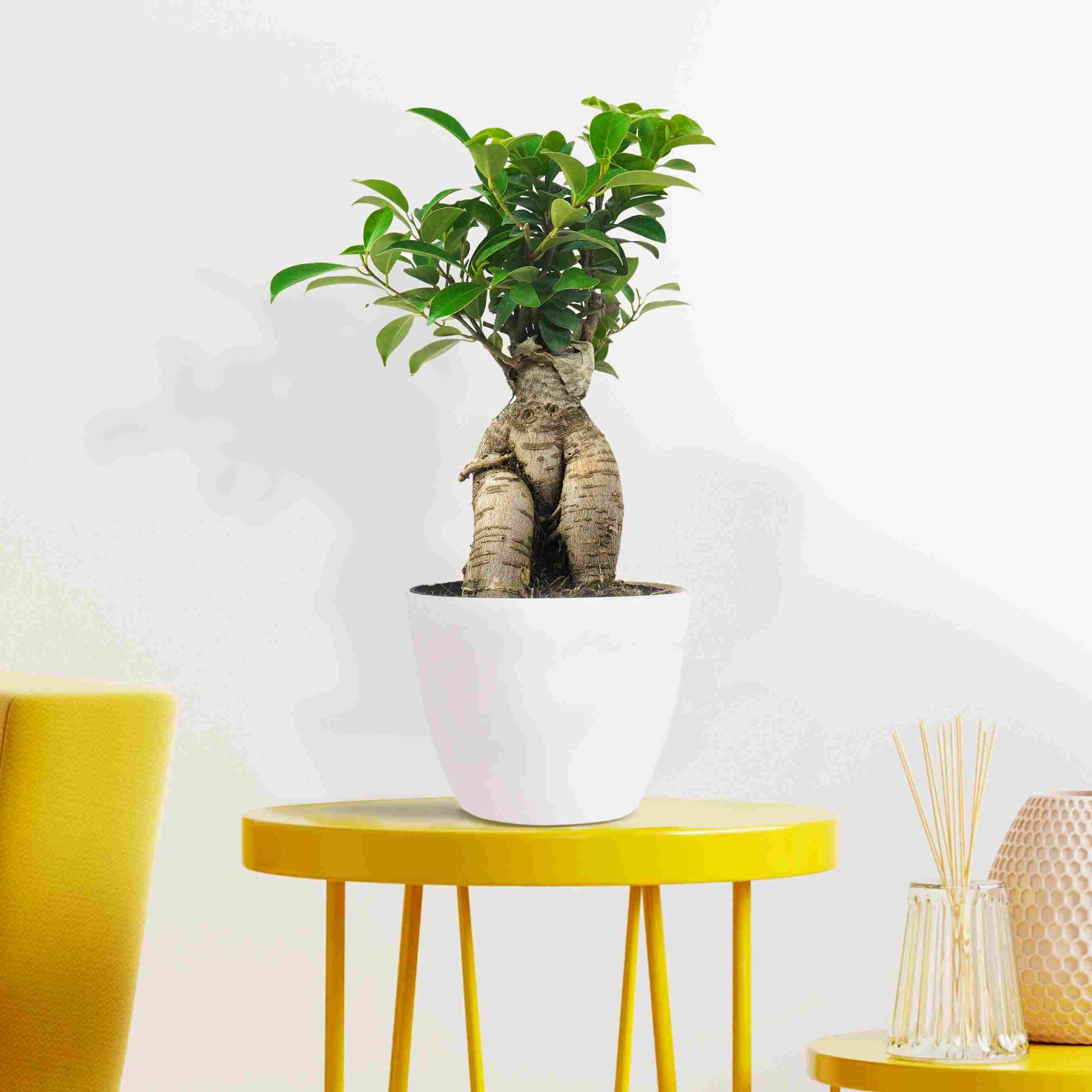
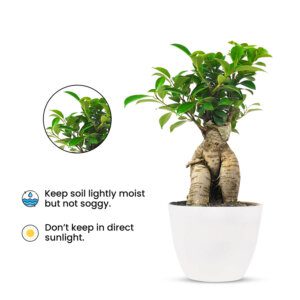



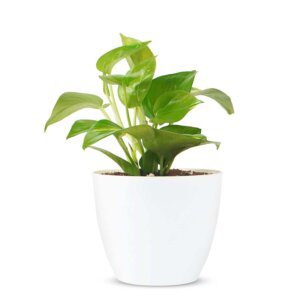

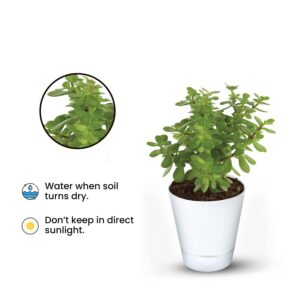
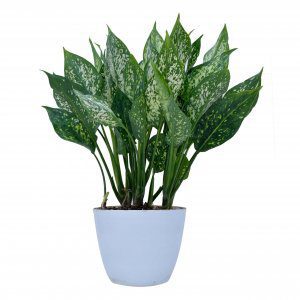

Reviews
There are no reviews yet.